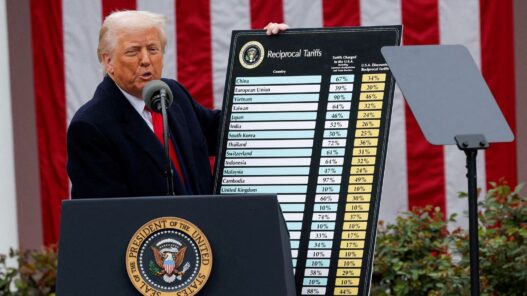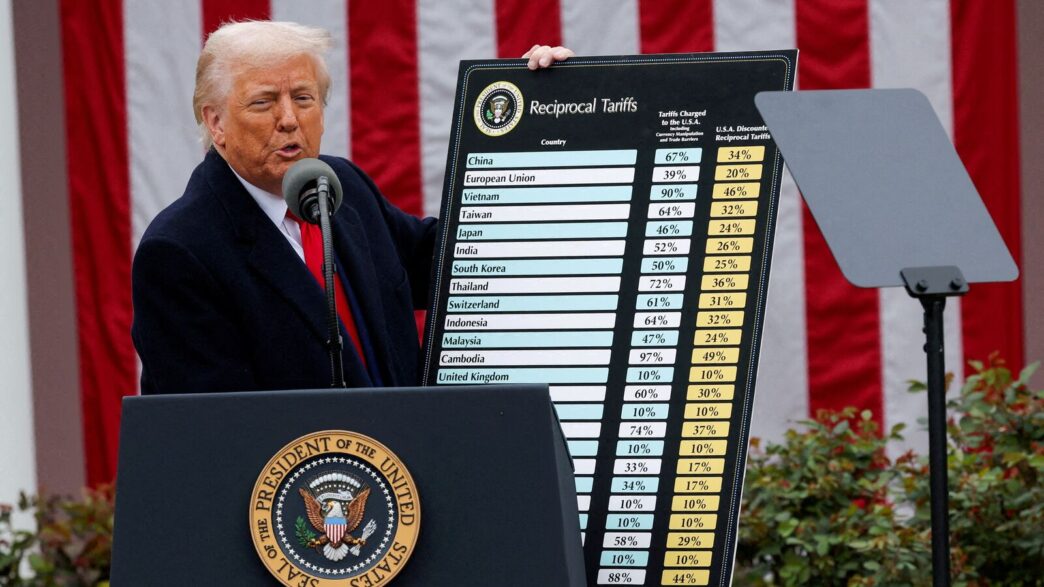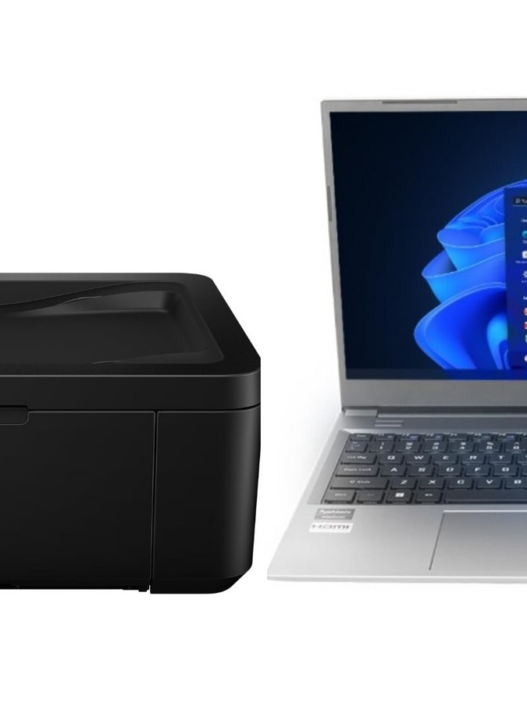“…Apparently it’s very detailed and thought out. Big if true. The contents of the report seem vaguely Deep Research ish..,” Rohit Krishnan, chief product officer of Bodo.ai, posted on X.
He added that this might be “the first large-scale application of AI technology to geopolitics.. 4o, o3 high, Gemini 2.5 pro, Claude 3.7, Grok all give the same answer to the question on how to impose tariffs easily…” and termed the trend “Vibe Governing”.
“…Trump’s crazy tariff schedule was probably LLM-generated!..,” corroborated US-based cognitive scientist Gary Marcus.
Vibe coding, where programmers rarely review code, is a term coined by Andrej Karpathy, AI researcher and former director of AI at Tesla, on 6 February. In this context, “vibe governing” would imply minimal review of the AI output when crafting the tariff document.
Suspicions only grew further when it emerged that tiny Norfolk Island and the remote Heard and McDonald Islands near Antarctica—home mostly to penguins—were also included in the tariff list. Would human policy makers have done so? Or did some LLM hallucinate (put out wrong information confidently)?
Not so simple
That said, these claims will remain speculative unless backed by concrete evidence. Further, those like Arthur Breitman, an early architect of the Tezos protocol, counter that LLMs “…come up to the same answer because it’s just linear feedback, it’s the simplest most straightforward thing you could devise, doesn’t mean the admin (Trump administration) used LLMs”.
But the matter is not that simple since AI models can even reason (though, not as we humans do), making it harder to differentiate their output from that of humans. Cameron R. Jones and Benjamin K. Bergen from the Department of Cognitive Science at the University of California San Diego pointed out in their 31 March paper that four systems – ELIZA, GPT-4o, LLaMa-3.1-405B, and GPT-4.5 – that they evaluated have already passed the Turing test.
Alan Turing proposed the imitation game 75 years ago as a method of determining whether machines could be said to be intelligent. While some question its relevance in the context of today’s advanced reasoning models, it remains a credible benchmark.
Also Read | Back to economics 101: How Trump’s tariffs disrupt 200 years of trade rules to= economics= how= tariffs= disrupt= years= of= trade= rules=>Back to economics 101: How Trump’s tariffs disrupt 200 years of trade rules>Back to economics 101: How Trump’s tariffs disrupt 200 years of trade rules>Back to economics 101: How Trump’s tariffs disrupt 200 years of trade rules” to=”” economics=”” 101:=”” how=”” trump’s=”” tariffs=”” disrupt=”” 200=”” years=”” of=”” trade=”” rules=””>Back to economics 101: How Trump’s tariffs disrupt 200 years of trade rules>Back to economics 101: How Trump’s tariffs disrupt 200 years of trade rules” to=”” economics=”” how=”” tariffs=”” disrupt=”” years=”” of=”” trade=”” rules=””>Back to economics 101: How Trump’s tariffs disrupt 200 years of trade rules”>Back to economics 101: How Trump’s tariffs disrupt 200 years of trade rules”>Back to economics 101: How Trump’s tariffs disrupt 200 years of trade rules
“When prompted to adopt a humanlike persona, GPT-4.5 was judged to be the human 73% of the time: significantly more often than interrogators selected the real human participant. LLaMa-3.1, with the same prompt, was judged to be the human 56% of the time – not significantly more or less often than the humans they were being compared to – while baseline models (ELIZA and GPT-4o) achieved win rates significantly below chance (23% and 21% respectively),” the researchers said.
They concluded that the results constitute “the first empirical evidence that any artificial system passes a standard three-party Turing test.”
Pattern recognition
As this debate continues, the fact remains that governments and businesses have been leveraging artificial intelligence (AI) tools to analyse vast amounts of trade data, predict market trends and optimise supply chains in a bid to improve efficiency, decision-making and risk management.
For instance, AI-driven predictive analytics helps identify potential disruptions from geopolitical instability to climate-related risks, allowing businesses to take pre-emptive action. By analysing historical trade patterns and real-time market fluctuations, machine learning (ML) models can forecast demand, helping companies adjust pricing, production and logistics strategies accordingly.
In shipping and logistics, AI is optimising freight routes, reducing fuel consumption and improving delivery timelines. Customs agencies, too, are integrating AI to detect fraudulent transactions, streamline clearance processes and improve regulatory compliance.
Consider this. The US Customs and Border Protection uses ML to assess cargo risk and flag potentially illegal shipments, reducing delays while maintaining security. Dubai Customs has implemented AI-driven projects to improve trade facilitation and border control. Automated bots have been trained to handle repetitive tasks like data matching and pattern recognition, streamlining operations and reducing costs.
Governments and businesses have been leveraging AI tools to analyse vast amounts of trade data, predict market trends and optimise supply chains in a bid to improve efficiency, decision-making and risk management.
The European Union leverages AI-driven tools to improve supply chain visibility, ensuring that goods move efficiently across borders. It uses AI to detect illegal activities within the agri-food chain, particularly through natural language processing (NLP) techniques.
Governments also use ML models to predict demand fluctuations, optimise trade routes and mitigate supply chain disruptions. Singapore, a key global trade hub, has integrated AI into its TradeNet system, which automates trade documentation and expedites approvals, cutting processing times from days to minutes.
China employs AI to analyse global trade patterns, allowing its exporters to adjust strategies based on real-time insights.
Companies are deploying ML models to predict port congestion, assess inventory needs and enhance last-mile delivery networks. This results in cost savings and greater efficiency in global trade operations.
Financial institutions supporting trade are also embracing AI for fraud detection, credit risk assessment and automated loan approvals. AI-driven trade finance platforms are making it easier for small and medium-sized enterprises to access funding, fostering inclusivity in international commerce.
Leveraging GenAI too
Generative AI (GenAI), too, is enhancing trade documentation and contract management by automating the creation and verification of trade agreements, invoices and compliance reports. This reduces paperwork, minimises human error and accelerates cross-border transactions.
AI-powered chatbots and virtual assistants are improving customer support for exporters and importers, providing instant responses to regulatory inquiries and documentation requirements.
Also Read | Are Trump’s tariff rates made up? Here’s how they have been calculated>Are Trump’s tariff rates made up? Here’s how they have been calculated” trump’s=”” tariff=”” rates=”” made=”” up?=”” here’s=”” how=”” they=”” have=”” been=”” calculated=””>Are Trump’s tariff rates made up? Here’s how they have been calculated”>Are Trump’s tariff rates made up? Here’s how they have been calculated”>Are Trump’s tariff rates made up? Here’s how they have been calculated
GenAI is also reshaping trade diplomacy. By analysing past trade agreements and economic data, GenAI tools assist negotiators in drafting trade deals, identifying optimal terms and simulating potential economic impacts. The UK government has tested AI-generated trade agreement models to refine negotiation strategies for post-Brexit deals.
An April 2022 Organisation for Economic Co-operation and Development (OECD) paper titled ‘Artificial Intelligence and International Trade: Some Preliminary Implications‘ notes that AI-driven machine translation reduces language barriers in trade, boosting exports, especially for e-retailers. In logistics, AI enhances efficiency by optimising smart warehouses through better forecasting and coordination.
The financial sector also benefits, with AI improving access to credit, refining risk assessments and strengthening anti-money laundering compliance, among other applications.
According to the OECD, AI-driven machine translation reduces language barriers in trade, boosting exports, especially for e-retailers. In logistics, AI enhances efficiency by optimising smart warehouses through better forecasting and coordination.
The Harmonized System (HS) is a global classification system for traded goods that assigns codes to regulate tariffs and customs rules. AI helps businesses match products to HS codes, ensuring compliance and reducing errors. It also aids in detecting counterfeit goods, enhancing trade security and efficiency, the paper notes.
Trade growth fillip
A report published by the World Trade Organization (WTO) in November 2024 titled, ‘Trading with Intelligence: How AI Shapes and Is Shaped by International Trade’, reiterates how AI can lower trade costs, transform trade in services, boost the trade of AI-related goods and services and redefine the comparative advantages of different economies. It underscores that by reducing trade costs, AI could help level the playing field, particularly for developing economies and small businesses.
These groups, the report explains, often face significant barriers when trying to access global markets. With AI, they could better overcome these barriers, facilitating greater participation in international trade. In an optimistic scenario of widespread AI adoption and high productivity growth, global real trade growth could increase by nearly 14 percentage points by 2040.
In contrast, a more cautious scenario with uneven AI adoption and a lower increase in productivity predicts a trade growth of just under 7 percentage points. While high-income economies are expected to see the largest productivity gains, lower-income economies have a greater potential to reduce trade costs and enhance competitiveness through AI technologies.
Furthermore, AI is set to transform trade patterns in services, especially digitally delivered services. In an optimistic scenario, these services could see cumulative growth of almost 18 percentage points. This shift highlights how AI could significantly reshape the landscape of global trade, making it more efficient and inclusive for businesses of all sizes and regions, according to the WTO report.
The WTO also highlights that AI can forecast weather and enhance severe event prediction including tracking tropical cyclones. It can facilitate sustainable trade and protect biodiversity by means of tools such as image-based detection of illegal wildlife trade, high-risk animal tracking, food value chain optimisation and source monitoring and tracking.
Concerns remain
AI models, to begin with, remain opaque, which can lead to challenges in understanding how they arrive at their decisions or predictions. Another major challenge is the quality and availability of data since AI systems rely on vast amounts of accurate data, which may not always be accessible, particularly in developing economies.
For instance, systems could flag shipments inaccurately, either delaying goods unnecessarily or overlooking illegal or unsafe items. AI tools used to detect fraud or trade compliance violations sometimes produce false positives or fail to recognise more sophisticated forms of trade fraud.
Also Read | In charts: How exposed is India to Trump’s reciprocal tariffs?”>In charts: How exposed is India to Trump’s reciprocal tariffs?”>In charts: How exposed is India to Trump’s reciprocal tariffs?
AI tools used for supply chain management and route optimisation can sometimes lead to inefficiencies if the underlying models aren’t properly adjusted to real-world variables. For instance, during the covid-19 pandemic, several AI-based logistics systems failed to adapt quickly enough to sudden changes in global shipping demand, leading to bottlenecks, delays and disruptions in the supply chain that affected international trade.
Further, a poorly designed AI model might fail to account for the economic realities or political sensitivities of a country, leading to trade agreements that are either not feasible or disproportionately benefit one side. These miscalculations can undermine the negotiation process and even harm relations between countries.
AI tools used for supply chain management and route optimisation can sometimes lead to inefficiencies if the underlying models aren’t properly adjusted to real-world variables.
Legal and regulatory hurdles such as differing data privacy laws across countries also complicate the use of AI in international trade. Additionally, AI models can inherit biases from their training data, leading to unfair practices in areas like customs and trade negotiations.
AI systems also become potential targets for cyberattacks. Overreliance on AI may reduce human oversight, leading to potential decision-making errors even as ethical concerns about labour displacement arise as automation increases.
Environmental impact
The WTO report warns of “the risk of a growing AI divide between economies and between large and small firms is significant, as are data governance challenges and the need to ensure that AI is trustworthy”. It adds that there is also a need to clarify how AI relates to intellectual property rights.
The report underscores that AI systems have a direct environmental impact throughout their lifecycle, primarily due to resource consumption – the use of water, energy and raw materials is particularly significant, contributing to greenhouse gas emissions and other ecological effects.
That said, as the OECD paper emphasises, there is a symbiotic relationship between AI and international trade.
“AI has the potential to fundamentally change different aspects of trade and international business models. On the other hand, trade can be an important mechanism through which countries access the inputs needed to build AI systems and through which they can deploy AI solutions globally,” the OECD notes.












